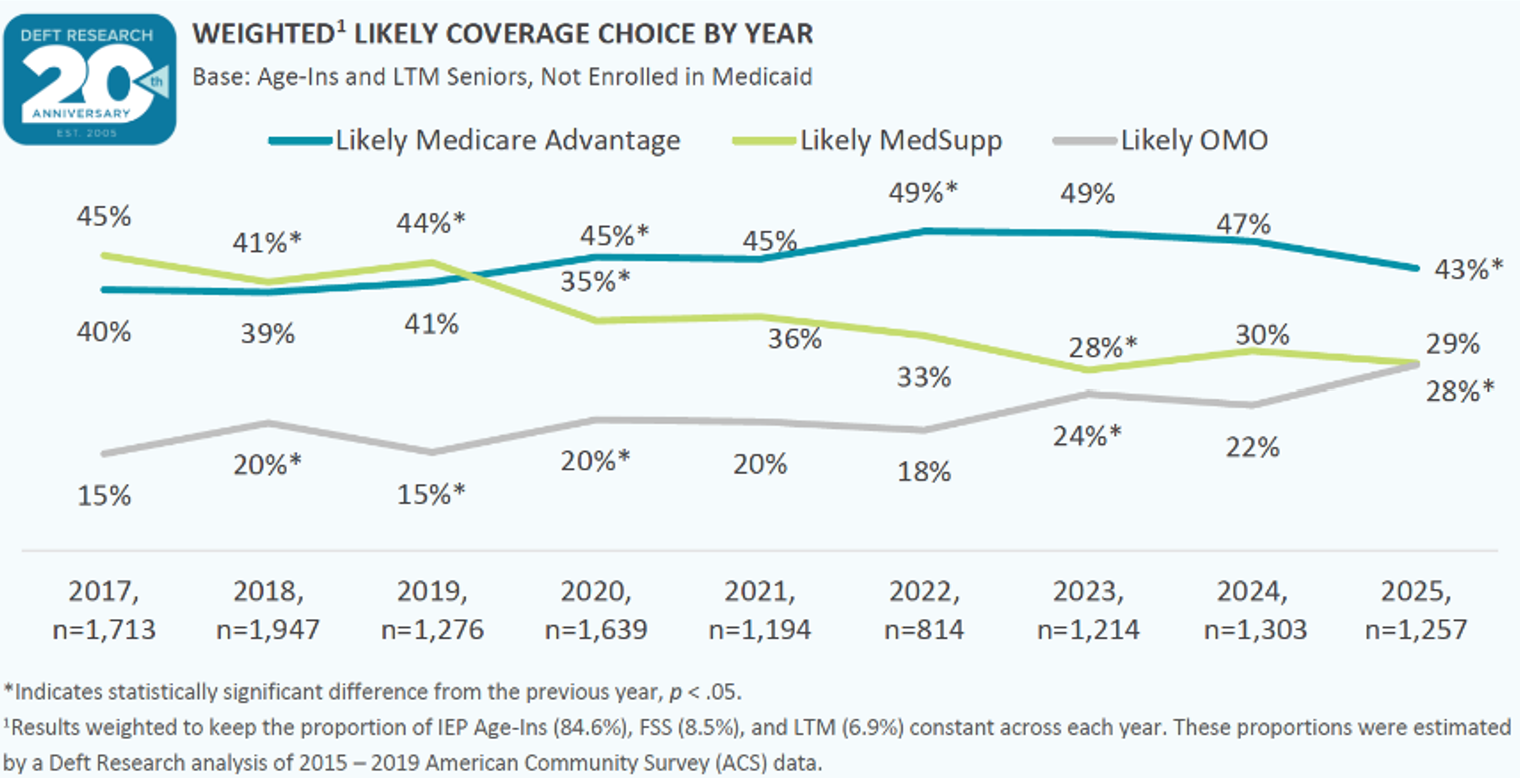Overview
Within the first 12 months of their Medicare tenure, 20% of seniors who had recently aged into MedSupp switched their coverage. For MA, it was 33%.
With nearly four million consumers turning 65 in 2026 — and cost pressures mandating that carriers extend member LTV — carriers, ad agencies, and consultants need to understand how to curate products and experiences to improve immediate acquisition while lessening the early year retention risk now plaguing the industry. Our 2026 Medicare Age-In Study can help them figure it out.
This year’s study also examines the degree to which Medicare self-insurance is taking hold (Original Medicare only) and which ancillary products carriers can still provide for those who are either uninterested in MA or unable to afford MedSupp.
Insights from the 2025 Report
A Shift in First Choice
The 43% of Age-Ins who initially lean toward selecting MA as their first destination in Medicare is the lowest since a shaky COVID economy collided with shady TPMO marketing to drive MA initial preference to record highs. MedSupp preference has held steady these last three years while Original Medicare Only (OMO) has ticked up — more likely of an indictment of MA due to its recent challenges than a full-throated endorsement of Original Medicare. Previous Deft studies have shown that many Age-Ins initially leaning toward OMO learn more about the pros of the two private options — and more about the cons of 20% coinsurance — during their IEP and end up enrolling in MA or MedSupp versus settling on standard, government-issued healthcare.
